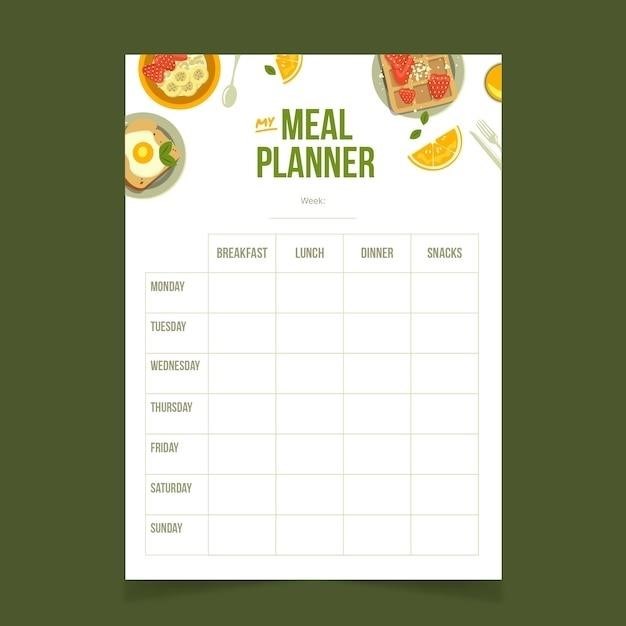
Geometry Two-Column Proofs Worksheets with Answers PDF
Unlock your understanding of geometry with our comprehensive two-column proof worksheets. These worksheets, accompanied by detailed answers, provide a structured approach to mastering geometric proofs. Strengthen your problem-solving skills and gain confidence in deductive reasoning with these printable resources.
Introduction to Two-Column Proofs
Two-column proofs are a fundamental method in geometry for proving geometric statements, theorems, and relationships. They present a logical and organized way to demonstrate the validity of a conclusion based on given information and established geometric principles. This method involves organizing your argument into two columns⁚ statements and reasons. Each statement, which is a step in the proof, is accompanied by a corresponding reason that justifies why that statement is true. This structured approach ensures that every step in the proof is logically connected and supported, leading to a clear and convincing demonstration of the desired conclusion.

Understanding the Format
A two-column proof is structured as a table with two distinct columns⁚ “Statements” and “Reasons.” The “Statements” column lists each step in the logical argument, while the “Reasons” column provides the justification for each corresponding statement. The “Statements” column presents the steps leading to the desired conclusion, while the “Reasons” column ensures that each step is supported by previously established facts, definitions, postulates, or theorems. This format provides a clear and organized way to present a logical argument, making it easy to follow the flow of reasoning and understand the validity of the proof.
Key Components of a Proof
A two-column proof typically includes the following key components⁚
- Given Information⁚ This is the starting point of the proof, outlining the facts provided in the problem statement. It’s essential to clearly identify and understand the given information before proceeding.
- Statements⁚ These are the logical steps taken to reach the conclusion. Each statement must be a true and verifiable claim based on the given information or previously established statements.
- Reasons⁚ These justify each statement, explaining why it is true. Reasons can include definitions, postulates, theorems, properties of equality, or previously proven statements.
- Conclusion⁚ This is the final statement in the proof, representing the desired outcome or the statement that was intended to be proven. It should follow logically from the preceding statements and reasons.
Common Reasons Used in Proofs
Two-column proofs rely on a set of commonly used reasons to justify each statement. These reasons are fundamental geometric principles and properties that form the foundation of deductive reasoning. Some of the most frequently encountered reasons include⁚
- Definitions⁚ Definitions provide precise explanations of geometric terms and concepts, such as the definition of a midpoint, angle bisector, or perpendicular lines. They are crucial for understanding the relationships between geometric figures.
- Postulates⁚ Postulates are basic assumptions that are accepted as true without proof. Examples include the Segment Addition Postulate (the whole is equal to the sum of its parts) and the Angle Addition Postulate.
- Theorems⁚ Theorems are proven statements that can be used as reasons in subsequent proofs. They represent established geometric truths that can be applied to solve problems.
- Properties of Equality⁚ These properties, such as the reflexive, symmetric, and transitive properties, allow us to manipulate equations and inequalities in proofs. They ensure that logical equivalences are maintained throughout the proof.
- Properties of Congruence⁚ These properties apply to congruent figures, stating that corresponding sides and angles are equal. They are essential for proving congruence and using CPCTC (Corresponding Parts of Congruent Triangles are Congruent).
Types of Geometric Proofs

While two-column proofs are a common format, there are other types of geometric proofs that are also used to demonstrate geometric relationships. These include⁚
- Flowchart Proofs⁚ These proofs use a diagram-like structure to visually represent the logical steps in a proof. Each step is connected to the next by arrows, showing the flow of reasoning. Flowchart proofs can be helpful for visualizing complex proofs and understanding the relationships between statements.
- Paragraph Proofs⁚ These proofs use a narrative format to present the logical argument. The steps are written in complete sentences, explaining each step in a clear and concise manner. Paragraph proofs can be more intuitive for some learners, as they resemble everyday language.
- Indirect Proofs⁚ Also known as proofs by contradiction, these proofs begin by assuming the opposite of what needs to be proven. If this assumption leads to a contradiction, then the original statement must be true. Indirect proofs are often used to prove statements that are difficult to prove directly.
Understanding these different types of geometric proofs can enhance your problem-solving abilities and provide you with a more comprehensive understanding of how to prove geometric relationships.
Triangle Congruence Proofs
Triangle congruence proofs are a fundamental aspect of geometry, demonstrating that two triangles have identical corresponding sides and angles. These proofs often rely on the five postulates of triangle congruence⁚ SSS (Side-Side-Side), SAS (Side-Angle-Side), ASA (Angle-Side-Angle), AAS (Angle-Angle-Side), and HL (Hypotenuse-Leg).
Two-column proofs are particularly effective for illustrating triangle congruence. Each step in the proof, starting with the given information and leading to the conclusion, is meticulously listed along with its corresponding reason, ensuring a logical and organized presentation.
Our worksheets will provide numerous examples and practice problems involving triangle congruence proofs. You will learn to identify the relevant postulates, apply them to specific triangles, and construct rigorous proofs.
Mastering triangle congruence proofs is essential for understanding more complex geometric concepts and for solving a wide range of geometry problems.
Parallel and Perpendicular Line Proofs
Parallel and perpendicular lines are fundamental geometric concepts with numerous applications in real-world scenarios. Understanding their properties and relationships through rigorous proofs is crucial for developing a strong foundation in geometry.
Our two-column proof worksheets offer comprehensive practice in proving statements about parallel and perpendicular lines. You’ll delve into key postulates and theorems, such as the Alternate Interior Angles Theorem, the Corresponding Angles Postulate, and the Perpendicular Transversal Theorem.
Through these exercises, you’ll learn to identify congruent angles, demonstrate parallel line relationships, and verify perpendicularity using deductive reasoning. Each step in the proof will be accompanied by a clear justification, fostering a deeper understanding of the underlying logic.
Practice with these worksheets will equip you with the skills to confidently tackle a wide range of problems involving parallel and perpendicular lines, solidifying your grasp of geometric principles.
Proofs Involving Quadrilaterals
Quadrilaterals, with their diverse properties and relationships, offer a rich playground for geometric proofs. Our two-column proof worksheets provide an excellent platform for exploring the fascinating world of quadrilaterals through rigorous deductive reasoning.
You’ll encounter a variety of quadrilateral types, including parallelograms, rectangles, squares, rhombuses, and trapezoids. Each worksheet focuses on specific properties associated with these shapes, challenging you to prove statements about their angles, sides, diagonals, and other characteristics.
For instance, you might be asked to prove that the opposite sides of a parallelogram are congruent or that the diagonals of a rhombus bisect each other at right angles. These proofs require careful application of geometric postulates, theorems, and definitions, strengthening your analytical skills.
By working through these worksheets, you’ll gain a deep understanding of quadrilateral properties and develop a strong foundation in geometric proof-writing, empowering you to solve complex problems involving these intriguing shapes.
Pythagorean Theorem Proofs
Dive deeper into the fundamental relationship between the sides of a right triangle with our Pythagorean Theorem proof worksheets. These worksheets challenge you to apply deductive reasoning to prove the theorem itself and its various applications.
You’ll encounter problems that involve constructing squares on the sides of a right triangle, calculating the lengths of sides, and proving relationships between the area of squares and the lengths of sides.
These exercises will help you understand the Pythagorean Theorem not just as a formula but as a fundamental geometric principle that governs the relationship between the lengths of sides in a right triangle.
Our worksheets provide step-by-step solutions, allowing you to check your work and gain a deeper understanding of the reasoning behind each step. By working through these proofs, you’ll develop a strong grasp of the Pythagorean Theorem and its powerful applications in solving geometric problems.
Practice Problems and Examples
Sharpen your skills with our extensive collection of practice problems and examples designed to solidify your understanding of two-column proofs. These worksheets provide a variety of scenarios, ranging from basic geometric relationships to more complex proofs involving triangles, quadrilaterals, and parallel lines.
Each problem is accompanied by a clear diagram and a set of statements to prove, guiding you through the process of constructing a logical and accurate proof.
The examples serve as a valuable learning tool, demonstrating how to approach different types of proofs and how to effectively utilize the given information and geometric properties.
You’ll find step-by-step solutions for each example, allowing you to see the reasoning behind every step and understand the thought process involved in constructing a proof. By working through these practice problems and examples, you’ll gain confidence in applying the principles of two-column proofs to solve a wide range of geometric problems.
Resources for Further Learning
Looking to delve deeper into the fascinating world of geometric proofs? Our collection of resources for further learning will guide you on your journey.
Explore online platforms like JMAP, where you can access a wealth of practice problems, interactive tutorials, and comprehensive guides on writing two-column proofs. These platforms offer a supportive learning environment, providing valuable insights and feedback to enhance your understanding.
For a more interactive approach, consider exploring dynamic geometry software like JGEX. This software seamlessly integrates dynamic geometry features with automated geometry theorem proving capabilities. This allows you to visualize geometric relationships and explore proofs in an engaging and interactive way.
To expand your knowledge beyond the basics, consult textbooks and online articles that delve into advanced geometric concepts and proof techniques. These resources will equip you with the knowledge and skills needed to tackle more complex proofs and explore the intricacies of geometry.
Using Two-Column Proofs in Real-World Applications
While two-column proofs may seem like an abstract mathematical concept, they hold significant relevance in real-world applications. From architecture and engineering to computer science and data analysis, the ability to reason logically and construct step-by-step arguments is crucial.
In architecture and engineering, two-column proofs are applied to ensure the stability and structural integrity of buildings and bridges. Engineers utilize these proofs to demonstrate the validity of their designs, ensuring that structures can withstand the forces and stresses they are subjected to.
In computer science, two-column proofs play a vital role in verifying the correctness of algorithms and programs. By rigorously proving the logical steps involved in a program’s execution, developers can ensure that their code functions as intended and produces reliable results.
The principles of deductive reasoning and logical argumentation, embodied in two-column proofs, are also fundamental to data analysis and scientific research. Scientists and researchers rely on these techniques to analyze data, draw conclusions, and formulate hypotheses.
Mastering geometry two-column proofs is not just about passing a test; it’s about developing a powerful tool for logical thinking and problem-solving. These worksheets serve as a valuable resource for building a solid foundation in geometry, enabling you to tackle complex problems with confidence. As you progress through these exercises, you’ll gain a deeper understanding of geometric concepts, enhance your analytical skills, and develop a keen eye for detail. Whether you’re aspiring to excel in mathematics or pursue a career in a field that demands logical reasoning, these worksheets will equip you with the essential skills to succeed. Embrace the challenge, delve into the world of geometry, and unlock the power of deductive reasoning.


